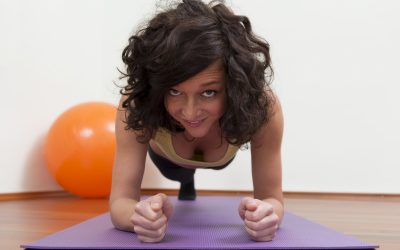Tight back and side muscles can hold you back, restricting movement and causing discomfort. Side stretches are a quick and effective way to boost flexibility and ease that stiffness, but it’s essential to stretch correctly to avoid injury. Stretching the right way ensures you enjoy all the benefits without the risks of overstretching or straining your muscles.
In this article, we’ll walk you through the fundamentals of side stretching, providing key tips on how to perform each stretch properly to enhance back and side flexibility while keeping you safe and injury-free.
Benefits of Side Stretching
Side stretching is essential for improving posture, flexibility, and overall muscle health. It helps alleviate tension in the sides and back, promoting proper alignment and reducing strain. Regular side stretches support better posture, allowing for less discomfort in the back and neck.
Improved flexibility through side stretches increases the range of motion in the upper body. In addition to relieving discomfort from prolonged sitting or poor posture, side stretches also support stress reduction. By releasing muscle tension, they promote relaxation and reduce the physical stress that often accumulates in the upper body, leaving you feeling more at ease and comfortable.
“I’ve noticed that tightness in my sides and back can really limit everyday movements, like turning my body, reaching overhead, or even just bending to the side. It’s amazing how much stretching those areas helps make those movements feel smoother and more natural, increasing my mobility and reducing the stiffness.”
Best Side Stretches to Improve Back and Side Flexibility
 1. Standing Side Stretch
1. Standing Side Stretch
The Standing Side Stretch targets key muscle groups involved in lateral movement and spinal flexibility, making it perfect for improving overall movement efficiency.
How to Perform the Stretch:
- Stand tall with your feet hip-width apart to ensure stability.
- Raise your arms overhead, keeping them straight. You can either keep your hands shoulder-width apart or interlace your fingers.
- Engage your core to support your lower back.
- Gently lean to one side, keeping your hips and shoulders aligned. Avoid twisting or leaning forward.
- Hold the stretch for up to 30 seconds, feeling a lengthening along your side.
- Return to the center and repeat on the other side.
2. Seated Side Stretch
The Seated Side Stretch is an effective and accessible way to improve flexibility in your sides and back. It offers stability and is ideal for all fitness levels, especially for those who spend long hours sitting, making it a perfect addition to your routine for better posture and mobility.
How to Perform the Stretch:
- Sit on the floor with your legs crossed or extended straight in front of you.
- Keep your spine straight and shoulders relaxed.
- Place one hand on the floor for support and extend the opposite arm overhead.
- Slowly bend sideways, reaching with your extended arm while keeping your chest open.
- Hold the stretch for up to 30 seconds, then switch sides.
3. Extended Side Angle Pose (Yoga Stretch)
The Extended Side Angle Pose targets the obliques, hips, and shoulders, while also engaging the legs and core. Maintaining proper technique and alignment is key to maximizing the benefits and preventing strain.
How to Perform the Stretch:
- Start in a wide-legged stance, with one foot pointing forward and the other slightly turned inward.
- Bend your front knee to a 90-degree angle, ensuring it stays aligned over your ankle.
- Place your front elbow on your thigh or, for a deeper stretch, bring your hand to the floor outside your foot.
- Extend your opposite arm overhead, reaching toward the front while keeping your chest open.
- Engage your core and maintain a straight spine, avoiding excessive forward leaning.
4. Side-lying Stretch
The Side-Lying Stretch allows you to target key muscle groups without the need for balance, making it a great option for beginners and those with limited mobility.
How to Perform the Stretch:
- Lie on your side with your legs stacked and your body in a straight line.
- Extend your bottom arm along the floor for support and rest your head on it.
- Reach your top arm overhead, gently stretching toward the opposite direction.
- Hold the position for up to 30 seconds, focusing on steady, deep breaths.
- Switch sides and repeat to ensure balanced flexibility.
5. Child’s Pose with Side Stretch
Child’s Pose with a side stretch is an effective way to improve flexibility in your back and sides while promoting relaxation. This variation deepens the original Child’s Pose stretch, targeting key muscle groups involved in spinal movement.
How to Perform the Stretch:
- Begin in a standard Child’s Pose by kneeling on the floor, bringing your big toes together and sitting back onto your heels.
- Extend your arms forward, keeping them shoulder-width apart, and rest your forehead on the ground.
- Walk your hands to the right side until you feel a stretch along your left side.
- Keep your hips anchored toward your heels to prevent excessive lower back movement.
- Hold the position, pressing gently into the floor, and maintain a neutral spine without rounding or arching.
- Repeat on the left side to stretch the right side of your body.
Regular side stretches can significantly improve your flexibility and reduce discomfort, but it’s important to have the right tools to support your practice. For a more tailored and effective stretching experience, check out the innovative features offered by WeStretch, designed to enhance your flexibility journey.
Safety Tips for Side Stretching
To stretch safely and effectively, it’s important to use the correct form and technique. Follow these tips to avoid strain and maximize the benefits of your stretches:
- Control Your Movements: Avoid twisting or bending unnaturally. Stop immediately if you feel sharp pain or discomfort and adjust your position.
- No Bouncing: Stretch gradually, holding the position without bouncing to prevent overstretching and injury.
- Hold for 15-30 Seconds: Maintain a steady breath and hold each stretch for at least 15 to 30 seconds to allow muscles to lengthen safely.
- Focus on Posture: Keep a neutral spine to engage the right muscles and prevent strain. Avoid slouching or collapsing into the stretch.
- Be Consistent: Incorporate side stretching regularly into your routine to improve flexibility and prevent tightness. Over time, this will enhance your range of motion and make movements smoother.
Exercise Smarter with WeStretch: Your All-in-One Stretching Assistant
A consistent full-body stretching routine is essential for improving flexibility, supporting injury prevention, and enhancing overall well-being. Carefully following simple yet effective stretches targeting the hamstrings, hip flexors, back, quads, chest, and shoulders, individuals of any fitness level can reap the benefits.
Regular stretching, with attention to proper form and consistency, can help you move more freely, recover faster, and feel better in everyday activities.
Looking for a way to add some fun to your stretching routine? Check out WeStretch—an app that’s like your own personal stretch coach! With tailored plans, easy-to-follow demos, and progress tracking, it’s got everything you need to keep you limber and on point. Ready to get flexible? Sign up today and let’s get stretching!
 FAQ
FAQ
What is side stretch good for?
Side stretch is great for improving flexibility in your back, sides, and obliques while promoting better posture and spinal mobility.
How do you stretch out sides?
To stretch out your sides safely, start with a gentle standing side stretch: stand tall, feet hip-width apart, and reach one arm overhead while leaning to the opposite side. Hold for 20–30 seconds and switch sides.
Can side stretches help with back pain?
Yes! Side stretches can help alleviate tension in your lower back and improve spinal mobility. They can also relieve tightness caused by prolonged sitting or poor posture.
What is the seated side stretch called?
The seated side stretch is commonly called the Seated Lateral Stretch or Seated Side Bend. In yoga, it’s often referred to as Parsva Upavistha Konasana when performed with wide legs or Parivrtta Janu Sirsasana when incorporating a twist.
What are the common mistakes to avoid when doing side stretches?
Avoid rushing through stretches or holding your breath—breathe deeply to improve flexibility. Don’t overstretch; push gently to avoid strain. Keep your form correct by engaging your core and avoiding excessive leaning forward or backward.






